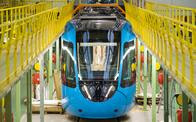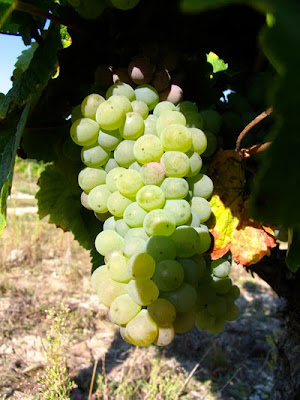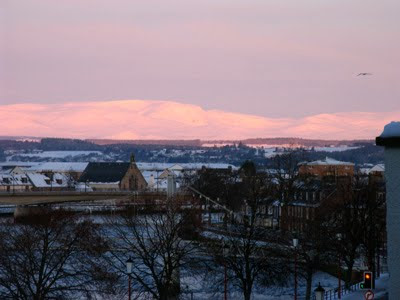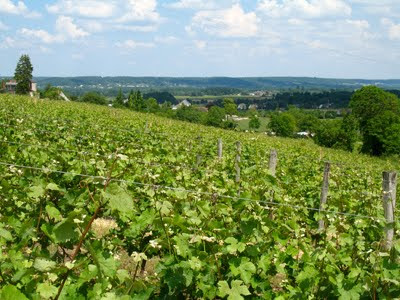Scenes from snowy Inverness where it has been snowing for much of today.
Thursday 31 December 2009
Pays Nantais: due in 2010 – tram-train Nantes to Clisson and

Two brief news items from Presse Océan:
Tram-trainSon arrivée est attendue pour l'été. Fin août, cinq rames du tram-train circuleront entre Nantes et Clisson. Lire la suite
Wednesday 30 December 2009
Wet end to the year?
October continued the year's dry theme with Nantes having 65.4mm (82.8mm average from 1971 -2000), Angers 49.8mm (60.6mm -av) and Tours 36.6mm (63.4mm). Rainfall for all three towns below average.
November was decidedly wet with Nantes having a whopping 181mm (85mm-av), Angers 122mm (61mm-av) and Tours 106.2mm (65mm-av). Rainfall for all three towns all well above average.
December remained wet in the west but drier in the east with Nantes having 105mm (93mm-av), Angers 79mm (65mm-av) and Tours 46.2mm (72.1mm). Tours notably well below the average rainfall.
Annual rainfall totals for 2009, admittedly with one day yet to go, are below the average. Nantes has 749.3mm (798.2mm-av), Angers 605.4mm (646.7mm–av) and Tours 526.5mm (694.1mm–av). The total for Tours is noticeably down on the average.
2007 Quincy, Jean-Claude Borgnat

Although considerably more expensive the Domaine de Chevilly, Quincy (see post here) is a better example. From Majestic the 2008 Touraine Sauvignon, Domaine Pré Baron at £6.99 a bottle is a more than adequate replacement.
Tuesday 29 December 2009
2004 Belle Dame, Sancerre Rouge, Vacheron

The Vacheron's Belle Dame comes from their silex (flint) vineyard, Les Romains, which is in the commune of Sancerre. The Vacherons are increasingly using large wooden vats to reduce the amount of oak in their wines.
Remarkable Decanter tasting of 2007 Layons
Out of the 50 wines tasted – four received a Decanter award (five stars – max number possible), 21 were highly recommended (four stars), 24 recommended (three stars) and just one was described as fair (two stars). 98% of the wines recommended – must be virtually unheard of for a Decanter tasting.
The following wines were the Decanter Award Winners: Domaine de la Petite Croix, Cuvée Victoria, Vieilles Vignes, Bonnezeaux (270g/l rs); Domaine du Petit Métris (Joseph Renou et Fils) Les Tetueresm, Chaume* (165g/l rs); Château la Varière (Jacques Beaujeau), Les Melleresses, Bonnezeaux (248g/l rs); and Château Pierre-Bise (Claude and Joëlle Papin), L'Anclaie, Coteaux du Layon-Beaulieu (220g/l rs).
Both Jacques Beaujeau and Claude and Joëlle Papin have been past winners of the Decanter World Wine Awards Loire Regional Sweet Wine Trophy.
* This would have been bottled before the 2007 Chaume appellation was annulled earlier this year by the French courts. In view of the controversy over Quarts de Chaume and Chaume , it is interesting to note that within the award winners and highly recommended there were five Chaumes and four Quarts de Chaume. One of the Chaumes was an award winner with no Quarts de Chaume in the top category. On this evidence if the consumer was confused by Chaume and Quarts de Chaume, they should not have been disappointed by the the quality from either appellation. Nor on this showing there is no evidence that producers in the Quarts de Chaume are making better wines than those Chaume, despite QdeC's superior terroir.
During the discussion following the tasting, Decanter asked the panel 'why don't we hear more about Loire sweet wines?'. Unfortunately they then proceeded to illustrate why these wines are not better known by failing to highlight the tasting on the magazine's front cover instead highlighting a tasting of 2005 Riojas, where the results were much more patchy with only one Decanter award winner!
The tasting panel: Sarah Jane Evans MW, Andy Howard (wine buyer, Marks & Spencer), Margaret Rand, Stephen Skelton MW, Steven Spurrier and myself.
Monday 28 December 2009
2006 La Jalousie, Savennières, Domaine du Closel
This was a sample from the Colchester Wine Company.
Domaine du Closel – Château des Vaults
49170 Savennières
Tel: 02.41.72.81.00
Email: closel@savennieres-closel.com
Site: www.savennieres-closel.com
Eastern Touraine's variety
Pinot Gris is more commonly called Malvoisie here. What little there is planted is often used to make a late harvest wine – sweet or semi-sweet depending on the vintage and the style wanted. It is rare to find it on sale. Instead an unlabelled bottle for personal consumption is more common. Further west in the Coteaux de l'Ancenis Malvoisie is relatively common. It is one of the three Pinots used to make Noble Joué (or rosé or vin gris) – the other two are Pinot Noir and Pinot Meunier.
Menu Pineau (also called Arbois) is a relation of Chenin Blanc. Once relatively widely planted it lost a lot of ground after the arrival phylloxera and during the 20th century. It can make attractively minerally dry whites. Some producers, like Pascal Potaire, are making 100% versions and I hope this coming decade will see more examples being made. Along with Chenin Blanc, it is the other grape of Vouvray, although this tends to be downplayed.
The official decrét (text) for the Vouvray appellation is unequivocal:
'Art. 2. - Les vins ayant droit à l'appellation contrôlée " Vouvray " devront obligatoirement provenir des cépages suivants : gros pineau ou pineau de la Loire ou chenin et petit pinot ou menu pinot.'
Interloire's site is an example of Menu Pineau being downplayed as Chenin Blanc is given as the sole permitted variety for Vouvray.
It would appear here that 'pinot' and 'pineau' are interchangeable. The rules appear to allow a Vouvray to be made from 100% Menu Pinot or Pineau. I have no idea if there are any examples of Vouvrays made from 100% Menu Pineau – if anyone knows of any I'd love to know please. In contrast to Vouvray, Montlouis allows only Chenin Blanc.

Sunday 27 December 2009
2008 Reuilly Les Pierres Plates, Denis Jamain
Salon des Vins de Loire 2010: UK Press presence?
 The 2010 edition of the Salon des Vins de Loire (1st-3rd February) is just over a month away. This has been an annual event since 1987 and remains France's only annual regional wine fair. Time to receive the annual reminder and invitations from Charles Sydney, a courtier based in Chinon who works with many UK wine importers and retailers supplying them with Loire wine.
The 2010 edition of the Salon des Vins de Loire (1st-3rd February) is just over a month away. This has been an annual event since 1987 and remains France's only annual regional wine fair. Time to receive the annual reminder and invitations from Charles Sydney, a courtier based in Chinon who works with many UK wine importers and retailers supplying them with Loire wine.Charles's message concludes with: 'it'd be great to see the UK press out here in force!'
In 2010 the long-term habituées – Sarah Ahmed (The Wine Detective), Neil Fairlamb and myself – will again be at Angers' Parc Expo. We will be joined again by Chris Kissack (winedoctor), who made his Salon début last year, and again by Ray O'Connor from the William Reed stable, where he is mainly responsible for organising the International Wine Challenge, and by Richard Kelley MW, buyer for Richards Walford and author of The definitive guide to the wines of the Loire. I guess that for 2010 a Fiat 500 might be a bit of a squeeze so we may have to go for an economy Mondeo.
I rather doubt if we will see anyone else from the UK press at the Salon. In part one can blame the UK press for not showing enough interest and initiative to make the easy journey out to Angers. Equally, however, the Salon's organisers do little or nothing to promote the Salon to the UK press.
Anyone, who does make the journey, should find a number of good 2009 wines to taste at a friendly and very professionally run Salon.
Saturday 26 December 2009
2008 Domaine de Chevilly, Quincy

Domaine de Chevilly is in Méreau in the Arnon Valley to the west of Quincy appellation. The domaine was founded in 1994 with just 1.5 ha of vines. The Lestourges now have nine hectares planted.
Domaine de Chevilly
52 Route de Chevilly, 18120 Méreau
Tel: 02.48.52.80.45
Email: domaine.de.chevilly@orange.fr
Friday 25 December 2009
Thursday 24 December 2009
Interloire's AGM: François Audebert and François Chidaine
(Over the next few days I hope to add views from more producers and also from the négoce. I also, of course, welcome comments.)
François Audebert
I started by asking François what had happened at the AGM.
François A: Not a great deal. It was accepted with regret that Bourgueil would leaving Interloire at the end of 2010. The atmosphere are meeting was all rather morose. The négoce pushed through the single rate of cotisation (subscription) to Interloire, which will be 4€ per hectolitre. Previously there had been 24 different levels with appellations fixing the amount. 24 was clearly too much but I would have preferred three different levels.
Jim: Do you think there will be a chance a reaching an accommodation during 2010 that will allow Bourgueil to remain within Interloire?
François A: I think it will very difficult. There appears to be incomprehension of our position and concerns by the négoce and I'm not sure that it is possible to have meaningful discussions anymore. Bourgueil has voted to increase its cotisation by adding 3.50€ to the current rate of 1.70€ a hectolitre – a total of 5.20€. This increase will be used for our public relations activities. A number of other appellations, such as Chinon and Vouvray, have voted an increase to their cotisations with the extra going to the syndicat.
We then discussed the proposal to make the Salon des Vins de Loire biannual, which is a consequence of reducing Interloire's budget for the Salon. Although the Salon is run by Expo-Park, Angers, Interloire provides an important part of the budget.
François A: The Salon is very important for the producers. The proposal to reduce the budget and hold the Salon every two years is a direct attack by the négoce on us. The Salon is crucial for us both to meet international buyers but also people from our home market – wholesalers, agents, cavistes, restaurateurs etc. Many people come to the Salon to taste the latest vintage, so it needs to be held every year – not every two years.
We talked about the AGM but also about the conflict between the producers and the négociants.
Francois C: Our level of cotisation has been cut from 5.5€ per hectolitre down to 4€. The négociants do not believe in promoting appellations. They just want to promote La Loire and to concentrate on selling low priced wine. Because of much of the former Loire négociants have been bought up by the big groups, there is no longer competition. The négociants are concerned with their margins. This means that producers supplying the négoce cannot survive commercially and some are now giving up.
Producers in Touraine do not agree with this approach – our objectives are not the same. We are in a different position in Touraine as we are not bound to the négociants as in the case for producers in Anjou and in Muscadet. Producers in Touraine are very attached to their appellations. Increasingly we will see funds from vignerons being transferred to their syndicats. The relationship between the producers and the négoce is broken.
Jim: Do you think that the relationship can be repaired?
François C: We will see but things may well have gone too far – there is a lot of bitterness. It is very unfortunate because in the current crisis we should all be working together. But for the producers to do nothing in the current situation is not an option. We have to react – we have to save viticulture for the next generation.
(NB: Other views to come.)
Wednesday 23 December 2009
Interloire's AGM: 22nd December 2009
Assemblée Générale d’Interloire Du 22/12/2009
Avec un vote du budget à l’unanimité des collèges, la dynamisation des marchés et le dialogue au sein de la filière seront les principes directeurs pour
InterLoire, Interprofession des Vins de Loire, s’est réunie en Assemblée Générale le 22 décembre 2009, afin de voter, notamment, le budget 2010. L’ensemble des membres de l’Assemblée Générale était présent ou représenté. InterLoire avait également invité les présidents des appellations dont plusieurs ont pu participer aux débats.
Dans ce cadre, les élus d’InterLoire ont fait le point sur la situation économique des appellations du ressort de l’association. Après une campagne 2008/2009 qui a montré une commercialisation dynamique, malgré plusieurs récoltes successives faibles et des stocks historiquement bas, le début de la campagne 2009/2010 établit un record au niveau des achats de vendanges fraîches avec 362.000 hl achetés (+ 69 %).
En France, les vins de Loire bénéficient d’une demande soutenue, notamment en grande distribution où un certain nombre d’appellations a suivi en 2009 une tendance positive (touraine blanc + 16 %, bourgueil + 3 %, saint-nicolas-de-bourgueil + 7 %), malgré un manque de disponibilités dû aux faibles récoltes pour des appellations significatives sur ce circuit (cabernet d’anjou et muscadet notamment). À l’export, qui représente 14 % de leur commercialisation, les vins de Loire souffrent à l’instar des autres vins de France. Lors de cette Assemblée Générale, les élus ont voté à l’unanimité des deux collèges, viticulture et négoce, le budget présenté.
En présentant un budget de dépenses globales de 10.305 K€ pour 8.883 K€ de recettes de cotisations interprofessionnelles, InterLoire mobilise une partie de ses réserves afin de dynamiser les marchés français et export. Valoriser le vignoble par le développement de la notoriété et de l’image de ses appellations et soutenir les ventes de l’ensemble de ses metteurs en marché sont les deux axes stratégiques pour 2010.
En France, les moyens seront concentrés sur la mise en avant de ses appellations sur les points de vente, à travers une campagne d’information et de promotion, et accompagnée d’une large campagne media, relations presse et relations publiques et le développement du tourisme viticole.
À l’export, l’interprofession mettra en œuvre l’année II de son programme publi-promotionnel sur les pays tiers (USA, Russie, Chine et Japon) en collaboration avec les vins du Centre et renforcera ses activités sur le cœur du marché européen qui constitue près de 70 % de ses ventes à l’export (UK, Belgique, Pays-Bas, Allemagne). InterLoire et les vins du Centre testeront également une approche au Canada.
Sur le plan technique et qualité, InterLoire poursuivra le soutien au développement et à la recherche expérimentale, et portera une attention particulière au transfert d’informations.
L’Assemblée Générale a également voté un budget significatif au profit de Vin et Société, démontrant sa volonté d’unir ses forces avec l’ensemble de la filière pour la défense de la place du vin et de ses hommes dans la société française.
Par ailleurs, l’Assemblée Générale a pris acte, avec regret, de la décision de Bourgueil de quitter InterLoire, conformément aux statuts, à compter du 31/12/2010.
Le Président Patrice Laurendeau*, approuvé par les membres de l’Assemblée Générale, a souhaité cependant que 2010 soit mis à profit pour intensifier le dialogue avec les appellations, dont certaines ont manifesté leurs désaccords avec des orientations de l’Interprofession, notamment en matière de
Un Conseil Exécutif exceptionnel, réuni préalablement à l’Assemblée Générale, avait d’ailleurs souligné que l’interprofession avait vocation à rassembler et non à diviser. 2010 sera donc une année de dialogue et de concertation.'
* Domaine de Terrebrune, Notre Dame d’Alençon, Anjou
Some reactions to the AGM to be posted shortly.
Murder in the Layon (cont)
It is thought that Aurélien was attacked by fellow grape pickers either because he had had sex with one of pickers' girl friends at the fête de fin de vendanges the day before or he had stolen some drugs.
Ouest-France has the details here.
See previous posting on Jim's Loire here.
Tuesday 22 December 2009
Domaine de la Noblaie, Chinon – couple of photos
Truffles in Indre-et-Loire
The Loire, in particular Indre-et-Loire, used to be famous for its truffles. Following the arrival of phylloxera in the region in the later half of the 19th century, a number of vignerons diversified and planted truffle oaks. The trade in truffles continued until the start of the First World War. Over the past decade or so there has been a renaissance.
La Touraine, ce n'est pas que l'andouillette et les rillons : c'est aussi la truffe. Eh oui ! La véritable truffe (Tuber melanosporum, dite truffe du Périgord) n'est pas la propriété du Sud de la France ou de l'Italie. L'Indre-et-Loire compte des truffières réputées et ici aussi, comme en Berry ou en Saumurois, on produit le champignon le plus cher du monde.'
Lire:












































